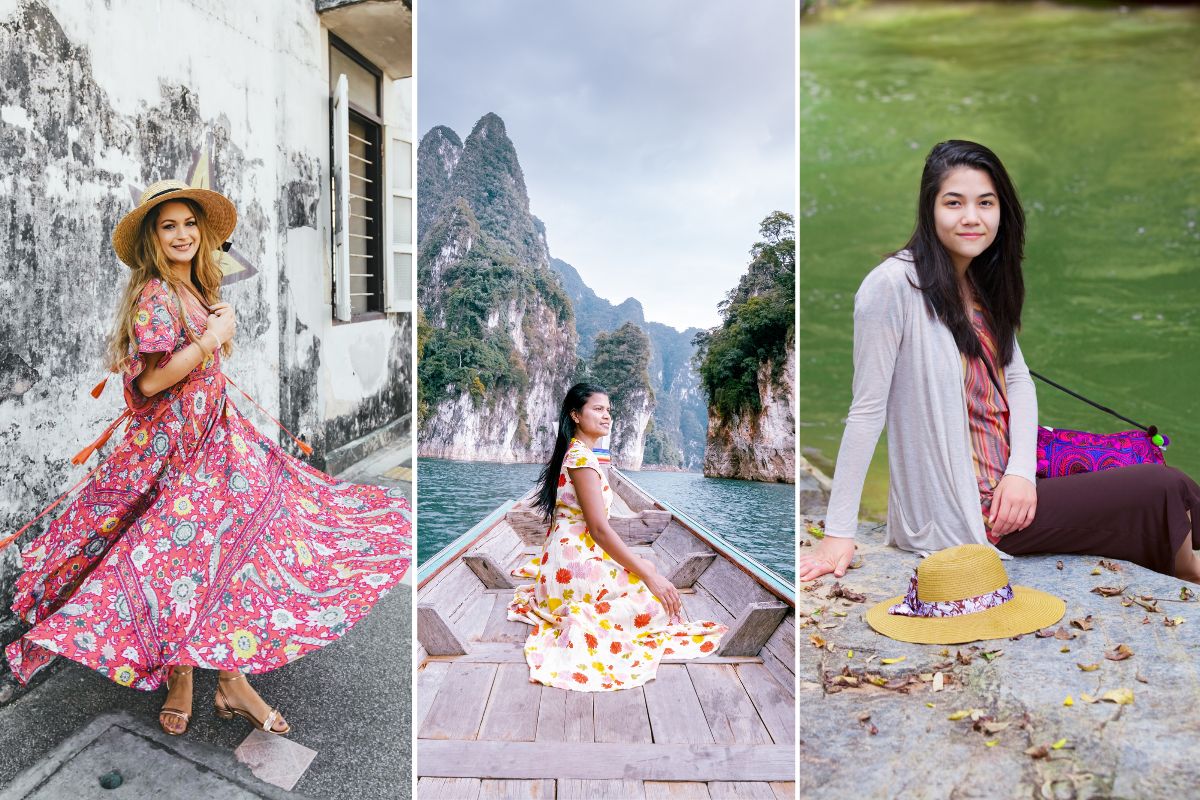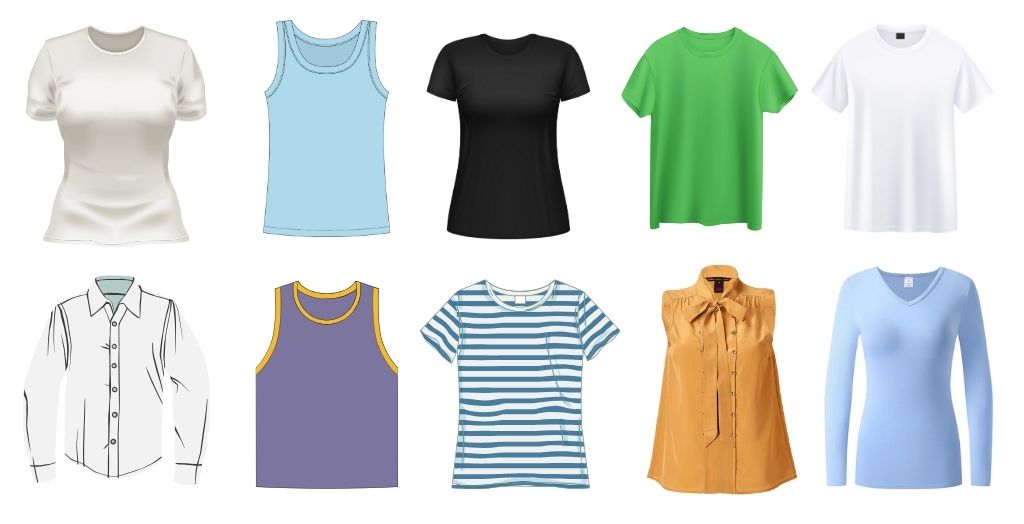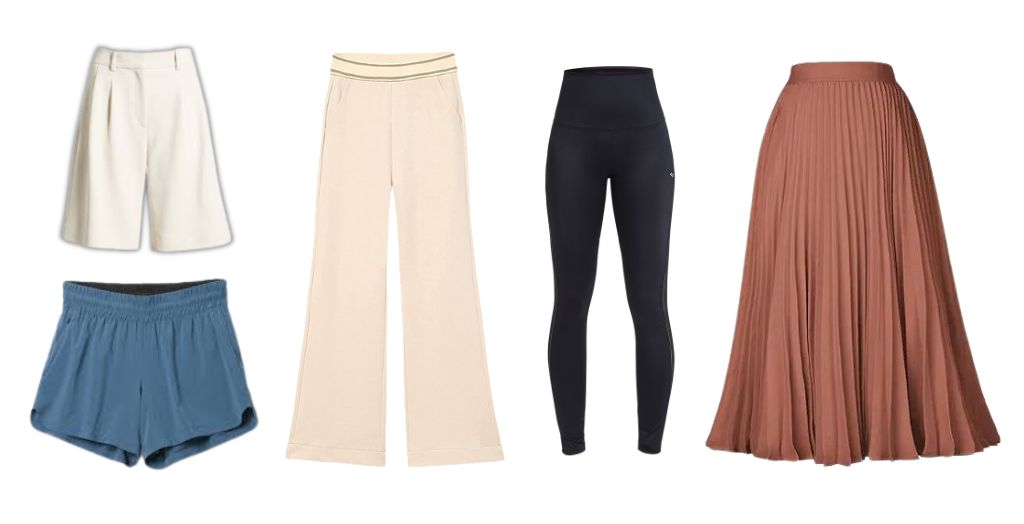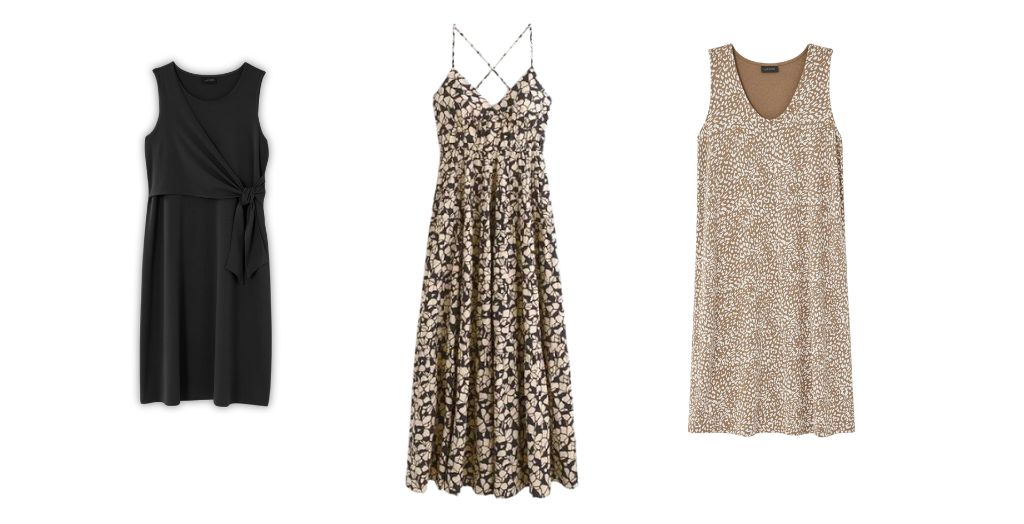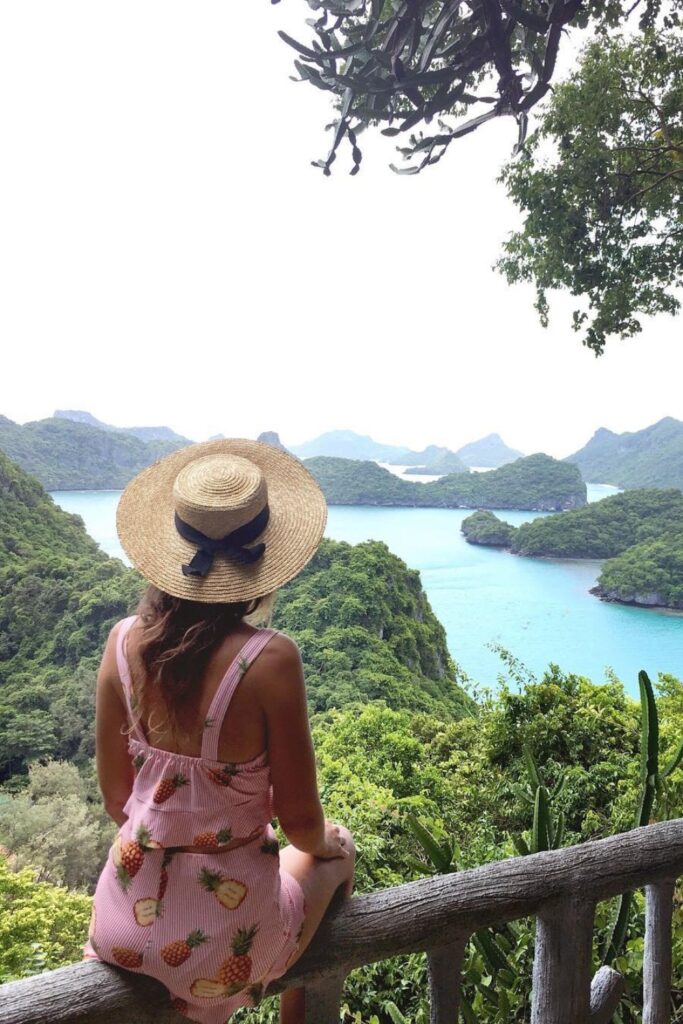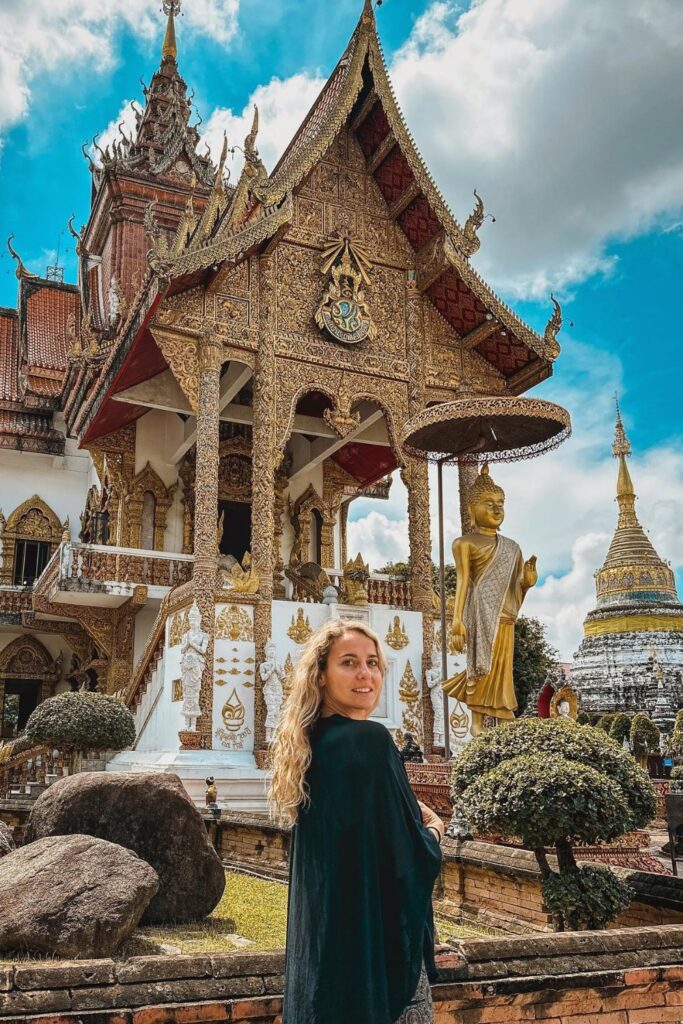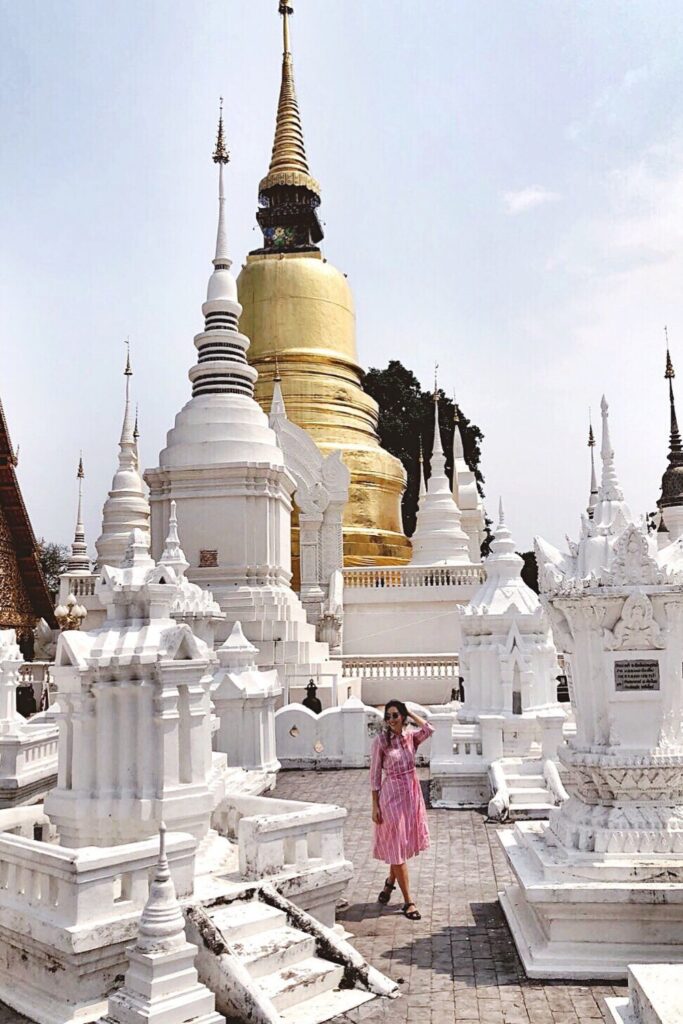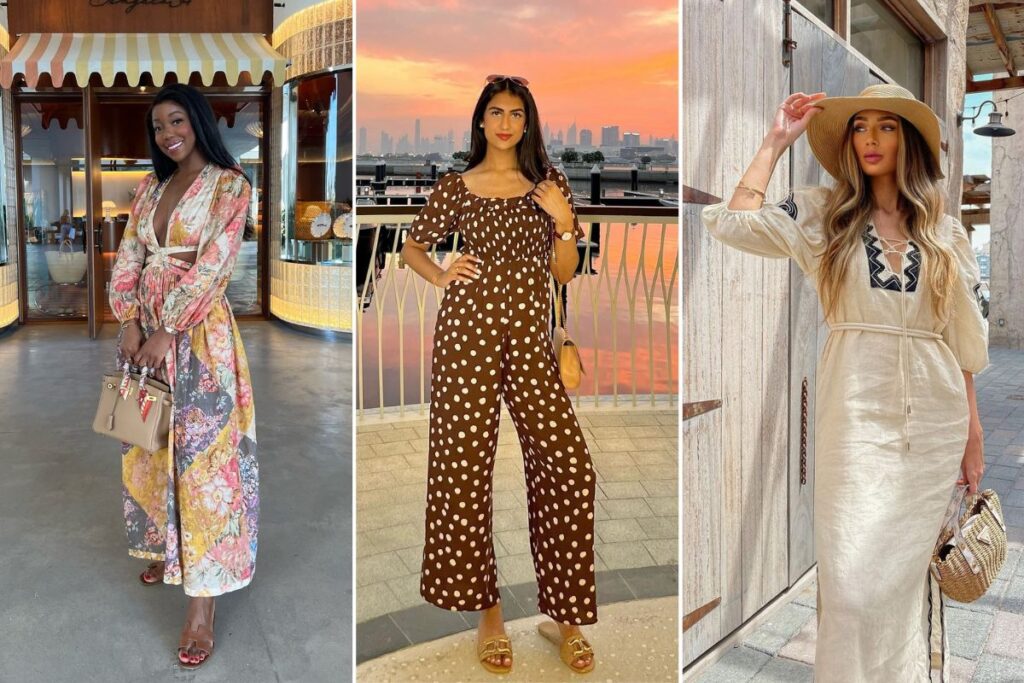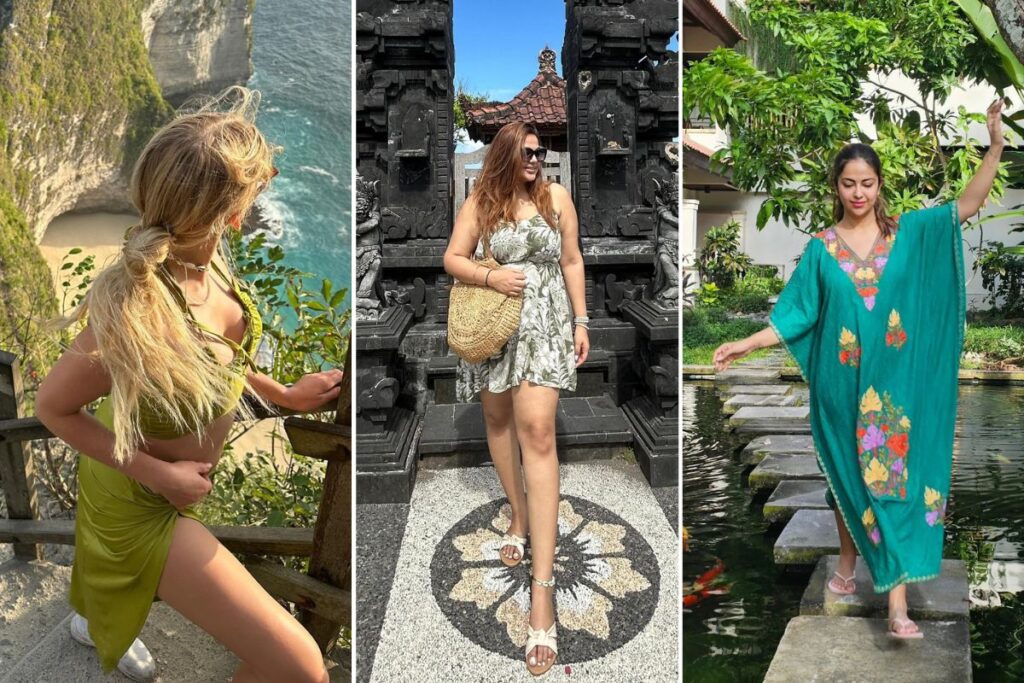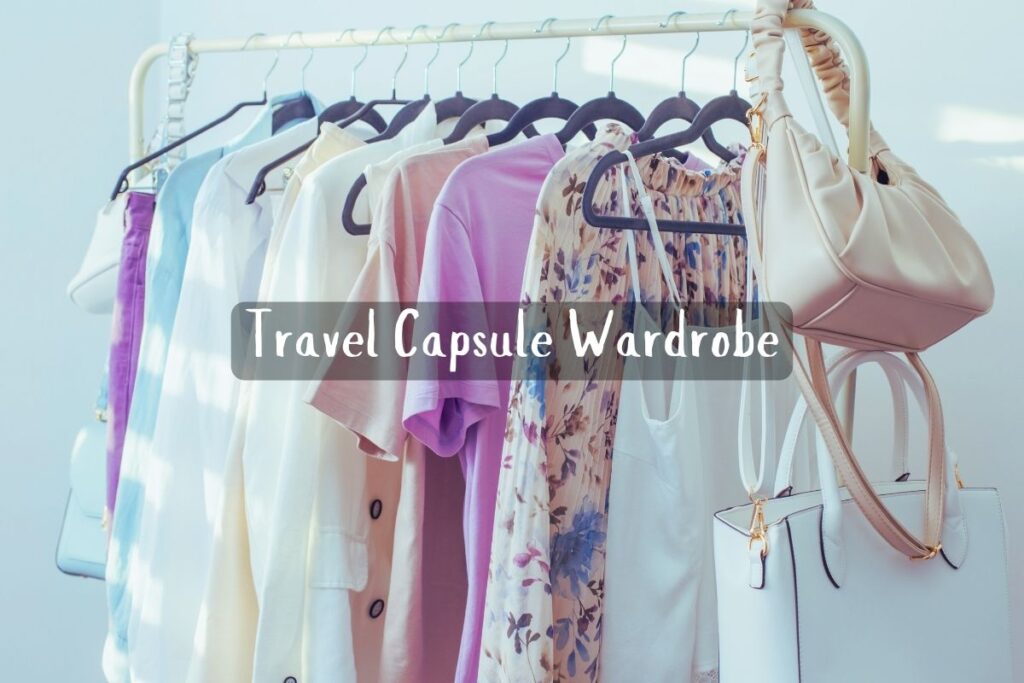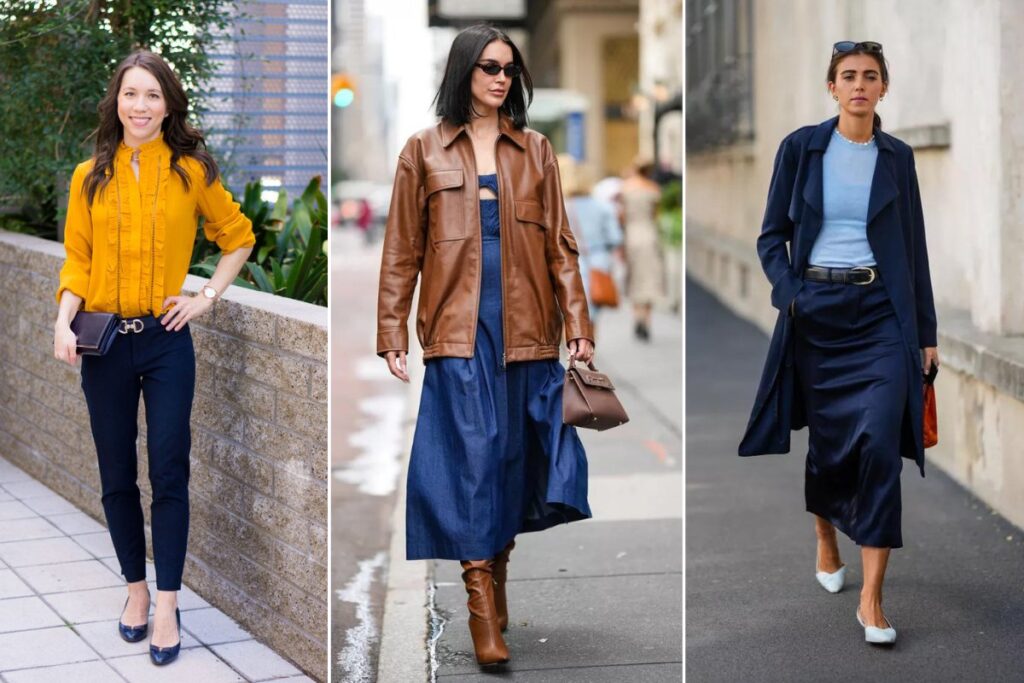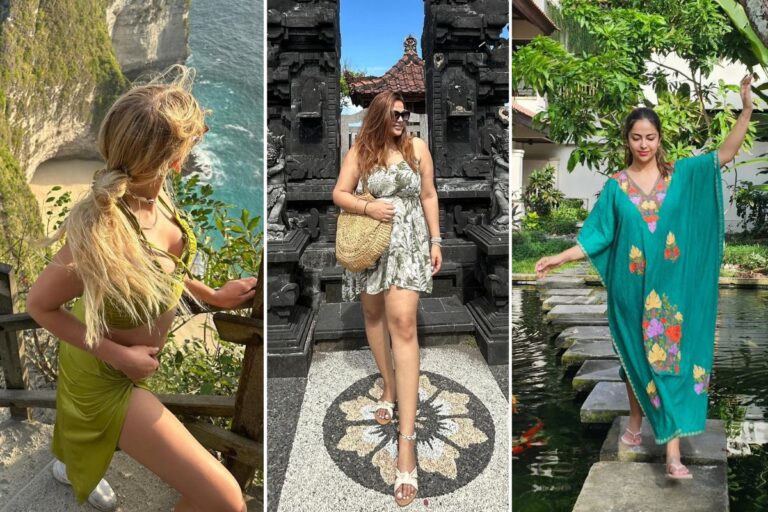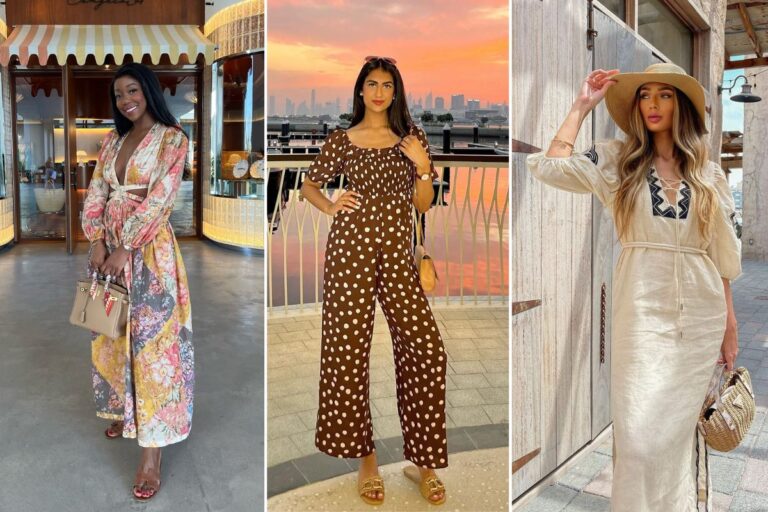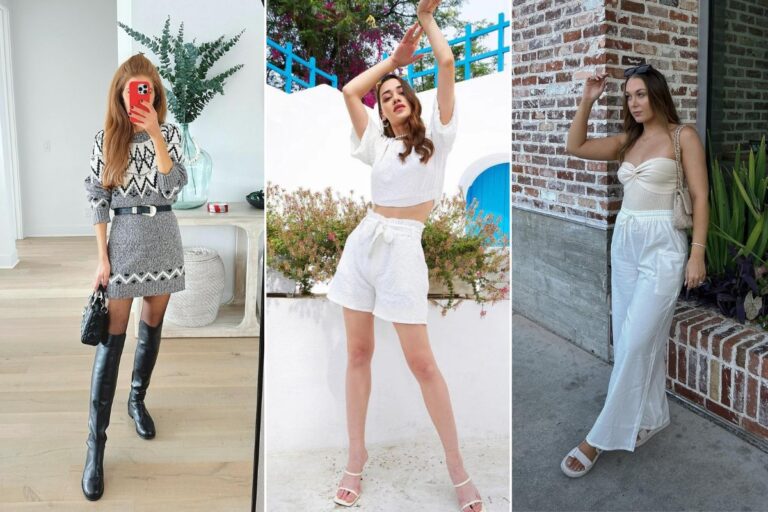Having visited Thailand many times over the past decade, I’ve made my fair share of packing mistakes. Choosing the wrong fabrics or wearing clothes that are too revealing have led to discomfort, unwanted attention, and even being turned away from temples.
Through trial and error, I’ve learned how to dress appropriately for Thailand’s hot, humid climate while still looking stylish.
In this article, I’ll share everything I’ve learned about what to wear in Thailand. I’ll cover clothing essentials, cultural considerations, seasonal differences, and more to help you pack the perfect Thailand capsule wardrobe.
Whether you’re backpacking through Bangkok or beach-bumming in Phuket, this guide will have you looking like a seasoned Thailand travel pro.
Introduction: Understanding Thailand’s Climate
Before we dive into the specifics of what to wear in Thailand, it’s crucial to understand the country’s climate.
Thailand is known for its hot and humid weather year-round, with average temperatures ranging from 75-95°F (24-35°C). Humidity levels often exceed 80%, which can make it feel even hotter than the thermometer suggests.
Thailand experiences three distinct seasons:
- Hot season (March-May)
- Rainy season (June-October)
- Cool season (November-February)
Each season brings its own challenges when it comes to dressing appropriately. As someone who’s experienced all three seasons in Thailand, I can tell you that packing the right clothes is essential for your comfort and enjoyment.
General Clothing Guidelines: Do’s and Don’ts
Do’s:
When considering what to wear in Thailand, keep these tips in mind:
- Pack breathable, lightweight fabrics: Opt for natural fibers like cotton, linen, rayon, bamboo, and viscose. These materials allow better air circulation and sweat evaporation, keeping you cooler in the hot and humid climate.
- Bring modest clothing: Thailand is a relatively conservative country, so it’s best to pack clothes that cover your knees and shoulders, especially when visiting temples or rural areas.
- Choose versatile pieces: Pack items that can be mixed and matched to create multiple outfits. This will help you pack lighter while still having plenty of options.
- Opt for neutral tops and colorful bottoms: This combination allows for easy outfit creation and helps you blend in with local Thailand fashion.
- Plan for multiple outfit changes: Due to the heat and humidity, you’ll likely want to change clothes at least twice a day. Pack accordingly!
Don’ts:
To ensure you’re comfortable and respectful, avoid these common mistakes when deciding what to wear in Thailand:
- Don’t pack heavy fabrics: Leave your denim and thick polyester clothes at home. These materials trap heat and moisture, making you feel even hotter.
- Avoid revealing or skimpy outfits: While beachwear is fine for the beach, it’s not appropriate for everyday wear in Thailand.
- Skip the fancy clothes: Unless you’re planning to attend a special event, there’s no need for formal wear in Thailand.
- Leave expensive jewelry at home: It’s best to avoid drawing unnecessary attention to yourself with flashy accessories.
- Don’t pack all-white clothing: White clothes can get dirty quickly and may become see-through when wet.
Detailed Clothing Essentials for Women
Now that we’ve covered the basics, let’s break down the essential items you should pack when considering what to wear in Thailand as a female:
Tops:
- 4 t-shirts: Choose lightweight, breathable fabrics like organic cotton or linen. Avoid low-cut styles if you plan to visit temples.
- 2 tank tops: Opt for ones with thicker straps for versatility.
- 1-2 nicer blouses: These can be dressed up for evenings out or paired with casual bottoms for daytime wear.
- 2 long-sleeve shirts: Pack a lightweight option (like a linen blouse) for temple visits and a slightly heavier one for cooler evenings.
- 1 fitness tank top: Great for active experiences or as a backup option.
Personal tip: I always pack a mix of solid colors and subtle patterns. This allows for easy mixing and matching, creating multiple outfits from just a few pieces.
Bottoms:
- 1 pair of knee-length shorts: Linen or lightweight cotton works well.
- 1 pair of athletic shorts: Perfect for workouts or lounging.
- 1 pair of lightweight, breathable long pants: These are essential for temple visits and cooler evenings.
- 1 pair of leggings or jeggings: Great for travel days or casual outings.
- 1 knee-length skirt: Choose a flowy, non-clingy fabric for comfort.
Pro tip: Once in Thailand, consider buying a pair of traditional Thai pants. They’re incredibly comfortable, culturally appropriate, and usually cost around $5.
Dresses/Skirts:
Pack at least 3 dresses:
- 1 simple knee-length dress: Versatile for day or night.
- 1 little black dress: Perfect for nights out, but can be dressed down with sandals for daytime.
- 1 long, flowy dress: Ideal for beach days or temple visits when paired with a scarf.
Personal experience: I often travel with more dresses than this, as they’re easy to pack and can be dressed up or down. Plus, they’re perfect for staying cool in Thailand’s heat.
Underwear:
- 8 pairs of underwear (or 4 quick-dry pairs)
- 3 bras (including 1 strapless if you’re packing sleeveless tops or dresses)
- 3-4 pairs of socks
Swimwear:
- 2-3 swimsuits
- A cover-up or sarong – to throw on post-beach. Walking straight into shops or restaurants in swimwear is frowned upon.
In my experience, quick-dry materials are best for swimwear in Thailand. They’ll dry faster in the humid climate, making it easier to pack them away after a beach day.
Footwear: Essential for Comfort and Practicality
When it comes to shoes, comfort is key. Here’s what I recommend packing:
Be prepared for adventures with the right footwear:
- Tevas or Chacos – My favorite walking sandals for Thailand. Super supportive and they dry quickly when wet.
- Flip flops – Essential for the beach, hostel showers, and wearing around towns. Old Navy has great cheap options.
- Sneakers or trainers – For hiking, exercising, or wearing during monsoon season when flooding is common.
- Optional: Hiking shoes or boots – Only pack if you plan on doing serious jungle trekking in Northern Thailand. Waterproof shoes are best in rainy season.
I prefer wearing sandals over sneakers most of the time in Thailand for breathability, unless it’s actively raining or I’ll be trekking through dirt/mud. Flip flops are key for hostel bathrooms!
Accessories: The Finishing Touches
Don’t forget these essential accessories when packing for Thailand:
- Sun hat – Protect your face and shoulders from intense rays. Baseball caps work too.
- Sunglasses – Pack a sporty, polarized pair. I never travel without my RayBans!
- Lightweight scarf – Scarves have so many uses in Thailand! Sarongs work perfectly.
- Rain jacket – For rainy season. A compact packable poncho is clutch.
- Small daypack – Carry essentials while sightseeing.
- Bandana or buff – Help wipe sweat and provide extra sun protection.
- Belt – Help cinch items that may get too big after hand-washing.
- 1-2 small jewelry items – I bring stud earrings and a simple pendant necklace typically.
What to Wear in Specific Locations
Bangkok
Thailand’s capital city calls for more modest dress. Stick to light, breathable fabrics and avoid shorts or skirts above the knee.
As someone who’s spent a lot of time in Bangkok, I can tell you it’s one of the world’s hottest cities, with an average annual temperature of 86°F (30°C).
Dressing appropriately will help you stay comfortable while exploring this vibrant metropolis.
Thai Islands & Beaches
The dress code is more relaxed in Thailand’s beach destinations. Standard beachwear is acceptable, but remember to cover up when leaving the beach area.
Popular beaches like those in Phuket can reach temperatures of 91°F (33°C) during peak season, so lightweight, breathable clothing is essential.
Northern Thailand & Chiang Mai
The climate in northern Thailand is similar to Bangkok but slightly cooler. Pack a light sweater for cooler evenings, as temperatures can drop to 59°F (15°C) in winter.
If you’re planning any treks, don’t forget to pack appropriate hiking gear. Chiang Mai’s average annual temperature is around 77°F (25°C), making it a bit more comfortable than the southern regions.
Temples
When visiting Thailand’s beautiful temples, it’s crucial to dress respectfully. Here are the key rules to remember:
- Cover your shoulders and knees
- Avoid see-through clothing
- Don’t wear tight-fitting clothes
- Bring a scarf or sarong as a backup
Did you know that Thailand has over 40,000 Buddhist temples? With so many to explore, you’ll want to make sure you’re always prepared with appropriate attire.
Packing Tips: Making the Most of Your Suitcase
Here are some tips to help you pack efficiently for your trip to Thailand:
- Pack enough for 2 outfit changes per day – Thailand is hot and humid! You’ll want fresh clothes.
- Mix & match neutral basics – They’ll never go out of style and are easy to pair together.
- Focus on breathable fabrics – Natural fibers like cotton and linen will be your best friend.
- Travel-sized toiletries – Liquid restrictions make these a packing must.
- Pack light – Laundry services are cheap, accessible, and fast throughout Thailand. Expect to pay around 30-50 baht (under $2 USD) per kilogram.
- Use packing cubes – Keep your clothes organized in your suitcase! I love Eagle Creek’s cubes.
Additional Items You’ll Want in your Suitcase
Toiletries & Medications
- Sun protection – Sunscreen, hat, UV-protective clothing are essentials. The sun is intense!
- Mosquito repellent – Bug spray will come in handy, especially in jungle areas.
- Wet wipes – For cleaning hands and sticky faces when sinks aren’t available.
- Travel soaps – Cleansing wipes, dry shampoo, deodorant. All available in small sizes!
- Feminine hygiene – Tampons and pads (tampons are harder to find in rural areas).
- First aid supplies – Disinfectant, bandages, anti-itch cream, etc.
- Anti-diarrheal meds – Helpful if you happen to have stomach issues or food poisoning.
- Motion sickness pills – For windy hill country drives and boat rides if you’re prone to nausea.
Pharmacies and convenience stores are everywhere in tourist areas, but good to have backups of essentials and any prescription medications.
Electronics:
- Universal adapter – Thailand uses 220V, 50Hz electricity. Most modern devices (laptops, phones, e-readers) can handle this, but small appliances like hair dryers will need an adapter.
- Portable charger – For juicing up devices on long transit days. Anker makes great compact power banks.
- Camera – Phones work fine, but a mirrorless camera captures amazing quality photos and videos if that’s important to you.
- Waterproof phone case – If spending lots of time on Thailand’s beautiful beaches and islands!
Cultural Considerations: Respecting Local Customs
Understanding and respecting Thai culture is crucial when deciding what to wear in Thailand. Keep these points in mind:
- Dress modestly – Avoid revealing much skin, and cover tattoos when possible.
- Remove shoes upon entering homes and some shops – There is often a shoe rack by the front door.
- Cover your shoulders and knees when visiting temples
- Be mindful of the high reverence for the Thai royal family; avoid any disrespectful comments or actions
What Not to Pack for your Thailand Vacation
To avoid any cultural faux pas, steer clear of the following:
- Revealing swimwear – Unless you plan to exclusively stay at a resort. Thong bikinis and very tiny suits should be kept to hotel pools and beaches.
- See-through fabrics – These won’t fly at temples or in most towns/cities.
- Super short shorts/skirts – Great for the beach, but not very appropriate in most public places.
- Shirts with offensive images or slogans – Keep clothing tasteful out of respect for local culture.
- Expensive or flashy jewelry – Best to leave heirlooms and fine jewelry at home.
It’s worth noting that public nudity, including topless sunbathing, is illegal in Thailand. Always err on the side of modesty when choosing what to wear in Thailand.
Tips for Female Travelers
As a female traveler, here are some additional tips I’ve found helpful:
- Pack anti-chafe balm – For inner thighs and underarms. Chub rub is real in humidity!
- Choose supportive sports bras – Even small-chested ladies probably want more coverage for activities.
- Consider a sarong – Multi-purpose for temple cover-ups, beach pareos, and even towels in a pinch.
- A hat with a chin strap is clutch – For breezy boat rides or scooter jaunts.
- Bobby pins – Wrangle frizzy hair in the humidity.
In my experience, solo female travel is generally safe in Thailand, but dressing modestly can help avoid unwanted attention.
Seasonal Considerations
When planning what to wear in Thailand, consider the season you’ll be visiting:
Hot Season (March – Mid-May)
The hottest time of year, with temperatures reaching 104°F (40°C) in Bangkok.
- Sheer, flowing fabrics – Let sweat evaporate quickly.
- UV-protective clothing – Block harsh rays.
- Bathing suits! – Take a dip to cool off.
Rainy Season (June – October)
The monsoon brings high heat plus humidity.
- Rain jacket – Lightweight and waterproof. Essential.
- Quick-dry fabrics – Whether hiking or braving cities.
- Waterproof shoes – Flooding is common. Sandals won’t cut it.
- Umbrella – Small enough to keep in your bag at all times.
“Cool” Season (November – February)
A relative term! Still quite warm in the south, but northern regions and Bangkok can get down to 59°F (15°C).
- Light layers – For chilly evenings or overly air-conditioned spaces.
- Long pants and closed-toe shoes – If planning to trek through forests and rice fields.
- Light scarf or shawl – As an extra layer over sleeveless tops.
No matter when you visit, lightweight, breathable fabrics are always your best bet in Thailand’s tropical environment!
Shopping Opportunities for Clothes & Souvenirs
One of the best parts of visiting Thailand is getting to shop for gorgeous local handicrafts and textiles.
Some of my favorite things to shop for in Thailand include:
- Traditional fisherman pants – The iconic Thai style I wear non-stop at home too! Incredibly lightweight and airy.
- Handmade jewelry – Stacked hill tribe silver pieces. Delicate gold-plated chains and pendants.
- Natural textiles – From hand-dyed cotton and silk to woven throws and embroidery.
- Sarongs/scarves – Vibrant prints galore! I use them as towel wraps, skirts, temple cover-ups and more.
- Bespoke clothing – Get custom shirts, dresses and suits tailored to perfection for a fraction of what you’d pay at home.
And you can’t miss perusing the 15,000+ stalls at Bangkok’s famous Chatuchak Weekend Market – one of the world’s largest markets. Shopaholics beware though…it’s dangerously easy to overpack your suitcase here!
What to Wear in Thailand: Final Thoughts
I hope this detailed packing list takes some of the guesswork out of figuring out what to wear for your upcoming Thailand vacation!
The most important tips are choosing lightweight, quick-drying fabrics suited for hot weather, packing layers and a rain jacket to adapt to changing temps, and bringing clothing that aligns with cultural dress codes.
Focus on the essentials, mix and match pieces, and don’t overpack. Thailand has plenty of shopping opportunities if you forget something or need to pick up extra items along the way!
With some thoughtful preparation and respect for local customs, your clothing choices definitely won’t prevent you from enjoying everything amazing Thailand has to offer.
Have an incredible trip! I’m happy to provide any other Thailand packing or travel tips – feel free to comment below.
